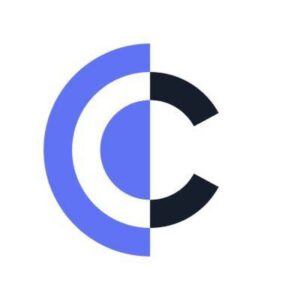In today’s digital landscape, privacy and security are paramount concerns. Messaging apps like Telegram have emerged as popular alternatives to traditional platforms, offering features like end-to-end encryption and large group chats. But what about the underlying technology that powers these apps? Is Telegram, known for its focus on privacy, dipping its toes into the world of blockchain?
The answer lies in a fascinating tale of innovation and strategic maneuvering. While Telegram itself doesn’t directly utilize blockchain technology within its core messaging functionality, it has a unique connection to a specific blockchain network called The Open Network (TON).
A Blockchain Born from Telegram’s Vision
The story begins in 2017 when Telegram, under the leadership of Pavel Durov, embarked on an ambitious project – The Telegram Open Network (TON). This brainchild envisioned a blockchain platform designed for scalability, speed, and user-friendliness. TON aimed to revolutionize not just messaging but also micropayments, data storage, and decentralized applications.
Telegram conducted a highly successful Initial Coin Offering (ICO) in 2018, raising over $1.7 billion to fuel the development of TON. However, regulatory hurdles related to the nature of the ICO in the United States threw a wrench in the plans. The US Securities and Exchange Commission (SEC) filed a lawsuit against Telegram, alleging that the company offered unregistered securities through the ICO.
Telegram Steps Back, TON Steps Forward
Faced with legal challenges, Telegram ultimately decided to abandon its direct involvement with TON in 2020. The project, however, didn’t disappear. The dedicated TON developer community took the reins, transforming TON into an open-source, community-driven blockchain network.
This shift marked a turning point. TON, now independent of Telegram, continued its development, launching its mainnet in 2020. Today, TON operates as a robust and versatile blockchain platform with its own native cryptocurrency, Toncoin (TON).
The Lingering Connection: Telegram Leverages TON for Ad Revenue Sharing
While Telegram doesn’t utilize blockchain for core messaging features, a surprising twist emerged in 2024. In February, Telegram announced a novel ad revenue sharing program for its popular channels. Here’s where TON comes back into play.
Telegram’s ad platform will exclusively use the TON blockchain for all payments and withdrawals. This means that channel owners who participate in the program will receive their share of ad revenue in Toncoin, the cryptocurrency native to the TON network. This integration highlights a strategic partnership between Telegram and the independent TON community.
Beyond Ad Revenue: Potential Future Applications
The use of TON for ad revenue sharing opens doors to potential future integrations between Telegram and the blockchain. Here are some intriguing possibilities:
- Micropayments within Telegram: TON’s fast and low-cost transactions could be leveraged to facilitate micropayments within Telegram. Users could send small amounts of Toncoin for tipping content creators, purchasing in-app features, or even making donations through channels.
- Decentralized Storage for Telegram: TON’s storage capabilities could offer a secure and potentially censorship-resistant alternative for storing Telegram data. This could be particularly appealing to users who prioritize privacy and data security.
- Telegram Passport Integration with TON: Telegram Passport, a system for storing and sharing verified identity information, could potentially integrate with TON for secure and decentralized identity management.
It’s important to note that these are just speculative possibilities. However, the current use of TON for ad revenue sharing lays the groundwork for future exploration of blockchain integration within the Telegram ecosystem.
The Evolving Landscape: Telegram, TON, and the Future of Messaging
The story of Telegram and TON is a captivating example of innovation, adaptation, and the ever-evolving relationship between centralized platforms and decentralized technologies. While Telegram doesn’t directly utilize blockchain for messaging, its connection to TON opens doors to exciting possibilities.
As both Telegram and TON continue to evolve, it will be fascinating to see how their paths intersect, potentially shaping the future of secure, user-centric communication in a blockchain-powered world.
Beyond the Headlines: A Deeper Dive into TON and its Potential for Telegram
The connection between Telegram and TON goes beyond the recent headlines about ad revenue sharing. Let’s delve deeper into the technical aspects of TON and explore how it could potentially integrate with Telegram’s functionalities in the future.
Understanding TON: A Scalable and Versatile Blockchain
TON boasts several technical features that make it a compelling option for various applications, including potential integration with Telegram. Here’s a closer look:
- Proof-of-Stake (PoS) Consensus Mechanism: Unlike Bitcoin’s energy-intensive Proof-of-Work (PoW) system, TON utilizes a PoS mechanism. This approach allows for faster transaction speeds, lower fees, and a more sustainable environmental footprint.
- Sharding Technology: TON implements sharding, a technique that partitions the blockchain into smaller segments, enabling increased scalability and faster transaction processing. This is crucial for handling the potentially high volume of transactions that could occur within a messaging app like Telegram.
- Smart Contracts: TON supports smart contracts, self-executing programs that can automate agreements and processes on the blockchain. This opens doors to innovative features within Telegram, such as secure escrow services for in-app purchases or decentralized governance mechanisms for channel management.
- Native Cryptocurrency (Toncoin): Toncoin (TON) acts as the native cryptocurrency of the TON network. It can be used for various purposes within the TON ecosystem, including paying transaction fees, staking for network security, and potentially facilitating micropayments within Telegram.
Exploring Integration Possibilities: How TON Could Enhance Telegram
While Telegram doesn’t currently utilize TON for core messaging functionalities, the technical capabilities of TON offer intriguing possibilities for future integration:
- Secure and Transparent Micropayments: TON’s fast and low-cost transactions could revolutionize micropayments within Telegram. Imagine seamlessly tipping content creators in channels, purchasing stickers or exclusive content with Toncoin, or even making micro-donations to support community initiatives. This could create a robust micro-economy within the Telegram ecosystem.
- Decentralized Storage for Enhanced Privacy: Currently, Telegram stores user data on centralized servers. Integrating TON’s decentralized storage capabilities could offer a more secure and potentially censorship-resistant alternative. Users could choose to store specific data, such as media files or chat history, on the TON network, giving them greater control over their data privacy.
- Decentralized Governance for Channels and Groups: Telegram channels and groups can be powerful tools for online communities. TON’s smart contract functionality could enable the creation of decentralized governance models for these communities. Imagine voting on channel rules, electing moderators, or managing group funds through secure and transparent on-chain voting mechanisms.
- Telegram Passport with TON for Decentralized Identity Management: Telegram Passport allows users to store and share verified identity information. Integrating TON could pave the way for a decentralized identity management system within Telegram. Users could manage their digital identities on the blockchain, selectively sharing verified information with other users or services without relying on centralized authorities.
Challenges and Considerations: The Road Ahead
While the potential benefits of TON integration with Telegram are exciting, there are challenges to consider:
- User Adoption: Integrating blockchain technology into a mainstream messaging app like Telegram requires significant user education and adoption. Users need to understand the benefits and potential risks associated with using Toncoin and interacting with the TON network.
- Regulatory Landscape: Regulatory uncertainty surrounding cryptocurrencies and blockchain technology could pose hurdles for widespread adoption. Clear regulations are needed to ensure a safe and secure environment for users and businesses alike.
- Technical Integration: Seamless integration of TON functionalities within Telegram requires careful technical development and testing. Ensuring scalability, security, and user-friendliness will be crucial for a successful implementation.
Conclusion: A Symbiotic Relationship for the Future
The story of Telegram and TON is a testament to the ongoing dialogue between centralized platforms and decentralized technologies. While Telegram doesn’t currently utilize blockchain for core messaging, its connection to TON opens doors to a future of secure, user-centric communication with innovative features powered by blockchain technology. As both platforms continue to evolve, their potential for a symbiotic relationship could shape the future of online communication and interaction. Whether these possibilities become reality remains to be seen, but one thing is certain: the connection between Telegram and TON is a captivating narrative in the ever-evolving landscape of technology and communication.






